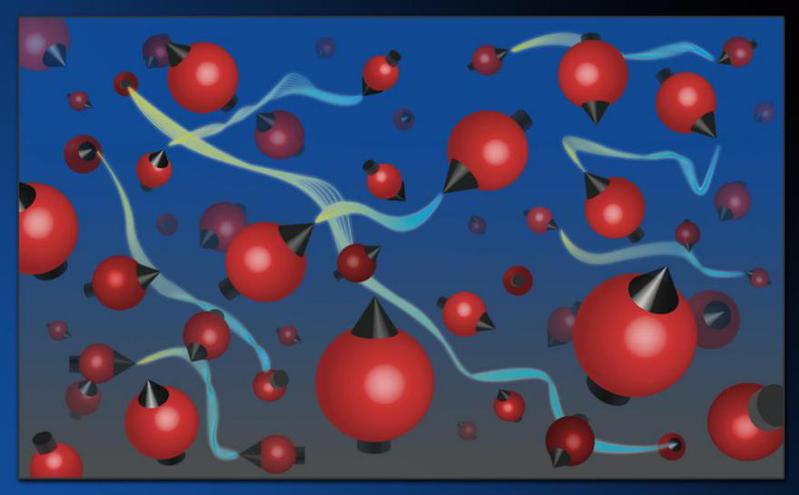Recently, Professor Jia Kong of Quantum Precision Measurement Team of School of Sciences of our university has made important progress in the field of quantum precision measurement, and published a research paper titled Measurement-induced, spatially-extended entanglement in a hot, strongly- interacting atomic system (Nature Communications 11:2415 (2020), DOI: 10.1038/s41467-020-15899-1)in the Nature sub-Journal Nature Communications with our school as the first author & unit.
The quantum entanglement effect is the core of quantum technology, which can remove the individual independence of microscopic particles (such as electrons or atoms) and establish a good correlation between each other, playing an important role in macroscopic quantum phenomena. However, quantum entangled states are extremely fragile, and any weak environmental disturbance can destroy the entanglement properties. Usually the research related to entanglement is carried out at low temperature to isolate the disturbance of the external environment, but it also limits the application of entanglement. For example, the most sensitive atomic magnetometer currently uses disordered and rapidly colliding atomic gas as the sensing medium. Its working environment is about 190 centigrade degrees. Whether entanglement, compression and other quantum characteristics can survive in this medium is unknown. In this study, Professor Jia Kong and others successfully prepared and observed an unprecedented large-scale atomic entangled state in this hot, disordered atomic gas. The number of entangled atoms is as high as 1013, breaking the historical record. This is exactly the same as the sensing medium and working environment used in the highly sensitive atomic magnetometer, which proves that the entangled state can be used for high-temperature quantum sensing and precision measurement.
The research has a great application potential in ultra-sensitive measurement of extremely weak magnetic fields, and is expected to be widely used in quantum computing, quantum communication, and quantum sensing (such as gravitational wave detection).
As Professor Morgan Mitchell of the Barcelona Institute of Photonic Sciences (ICFO) said: This result is surprising and contrary to our usual expectations of entanglement.
He added, We hope this large-scale entangled state can improve the sensitivity of the sensor, including better sensing performance in applications such as brain imaging, autonomous vehicles, and dark matter detection.

Picture: A schematic diagram of an entangled atom cloud, in which yellow and blue lines indicate entanglement between a pair of atoms. Image copyright: © ICFO
Professor Jia Kong is a high-level talent introduced full-time by the School of Sciences. In recent years, the quantum precision measurement team led by Prof. Xiaoming Lu and Prof. Jia Kong has continuously made many important progresses in quantum imaging, quantum communication, quantum amplifiers, etc.And has published many important research results in many top physics journals such as NPJ, Quantum Information, Physical Review A, and Physical Review Applied.
